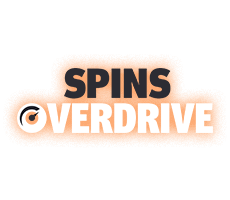How to play
Learn about the importance of bankroll management
Budgeting is essential in all walks of life, regardless of whether you run a business or are controlling your finances. Budgeting in poker comes under the umbrella of bankroll management; it is an important skill every poker player develops. Bankroll management may seem boring because it influences the poker games you should play, but it is crucial to your longevity in poker for reasons you are about to learn.
Poor bankroll management is the primary reason poker players go broke. Going broke or busting is disastrous, not least because it means you cannot do what you love: playing poker. A bankroll is a poker player's ammunition on the battlefield. Having no bankroll isn't like taking a knife to a gunfight; it is worse. You cannot even enter the fray without a war chest behind you.
What is a poker bankroll?
Before we get started, let's answer the question of what is a poker bankroll. A poker bankroll is the amount of money you have available to play poker, pure and simple. Your bankroll is made up only of money you can afford to lose; that is incredibly important. If you claim to have a $1,000 bankroll but have a $500 bill to pay that you have no other means of funding, then you do not have a $1,000 bankroll; your poker bankroll is $500.
Poker bankrolls are usually called buy-ins for a particular level rather than their monetary amount. Someone playing $11 tournaments with a $1,100 bankroll is said to have 100 buy-ins instead of $1,100. The same is valid for cash games. We assume players are buying in for 100 big blinds, so someone playing $0.05/$0.10 (100 big blinds is $10) with a $300 bankroll has 30 buy-ins.
The size of your bankroll, not only your skill level, determines the stakes you should play at PartyPoker. We will discuss what stakes you should play with your current bankroll soon.
Why is poker bankroll management important to follow?
Nobody likes losing, especially when money is involved. No matter how amazing you are at poker, you will lose at some point; it is the nature of the beast. Pocket aces lose to a random hand almost 20% of the time, your opponents will hit the occasional runner-runner flush, and you will sometimes find yourself in the dreaded set-over-set scenario. A substantial bankroll allows you to soak up these inevitable losses and continue playing the game you love.
Poker is a game with mathematics at its core, and that poker math creates what is known as variance. Mathematical variance is complex, but simply put, it is the path something takes before reaching its final number. For example, if you tossed a coin one million times, you would expect it to land on heads 500,000 times and tails the same amount because the outcome of flipping a coin is 50/50. However, if you kept detailed records, there would be spells where the coin landed on heads 100 or even 1,000 times in a row, yet the outcome would be an almost perfect 50/50 split in results.
The "weird" results are what can happen in the short term. A bankroll allows you to play through these short-term rough patches on your journey towards an end goal.
Following poker bankroll management is about moving up stakes and dropping down when required. Having the discipline to play poker for lower stakes is vitally important to prevent you from going broke.
The size of your bankroll dictates what stakes you should play online at PartyPoker. For example, you may play $0.10/$0.25 No-Limit Hold'em cash games with a $1,000 bankroll but endure a series of losses that leaves you with $400. Dropping down to the $0.05/$0.10 level to rebuild your bankroll is recommended here.
Eventually, you will settle on a level where you are profitable. There is no shame in not making it to the high-stakes games or frequenting the micro-stakes. Your poker career is yours and yours only. Playing this game and doing so profitably is a great feeling.
Bankroll management allows you to make moves with confidence
An often overlooked positive about following poker bankroll management is that the cushion of money behind you allows you to make the correct play or move. Consider the following over-the-top scenario. You are playing in a $0.25/$0.50 cash game where an opponent moves all in for $50 and shows a pair of twos. You have suited ace-king, so you are a 55% favourite and should call because you will make money in the long run with this move. However, you have bought into the game with your entire $50 bankroll, meaning you lose and go broke 45% of the time. You would likely fold in this spot to preserve your bankroll and essentially give up some all-important equity. Yet a call is likely if you had a $2,500 bankroll because even though you would still lose a $50 stack 45% of the time, you'd still have $2,450 to continue playing.
The best poker players continually make the best mathematically correct plays, even if it results in a short-term loss.
How large should your poker bankroll be?
Now for the question on everyone's lips: how large should my poker bankroll be? It depends, is the answer. Several factors determine how large of a bankroll you should have in your arsenal.
The poker variants and formats you play influence the size of your bankroll. Someone playing six-handed No-Limit Hold'em cash games can have a smaller poker bankroll than someone playing six-handed Pot-Limit Omaha for the same stakes. This is because PLO has wilder swings and more variance than NLHE.
Your playing style affects your bankroll requirements, too. Tight-aggressive (TAG) players can play from a smaller bankroll than loose-aggressive players (LAG). A TAG player mostly gets their chips in as a favourite with strong holdings, whereas a LAG often pushes small edges, resulting in more variance.
Consider how risk-averse you are and how easy it would be to reload your PartyPoker account before settling on the size of your poker bankroll. Your bankroll requirements can be smaller if you have no problem redepositing if you go bust. Conversely, it should be greater if you would struggle to make another deposit. It is a good idea to follow stricter guidelines as a risk-averse person.
The table below shows some poker bankroll recommendations for you to consider. Of course, the bankroll size you choose is entirely up to you.
|
Game |
Minimum |
Medium |
Cautious |
|
No-Limit Hold'em 6-Max cash games |
30 buy-ins |
50 buy-ins |
100 buy-ins |
|
No-Limit Hold'em full ring cash games |
25 |
40 |
75 |
|
Pot-Limit Omaha 6-Max cash games |
50 |
100 |
150 |
|
Pot-Limit Omaha full ring cash games |
30 |
50 |
100 |
|
Sit & Go full ring |
30 |
50 |
100 |
|
No-Limit Hold'em multi-table tournaments |
100 |
200 |
500 |
|
No-Limit Hold'em multi-table tournaments (large fields) |
200 |
400 |
600 |
As a general rule, you should never have more than 5% of your bankroll at risk at any one time. Also, multi-table tournament (MTT) players use their average buy-in for tournament bankroll levels. MTT grinders that typically play $22 buy-in tournaments will often also play $5.50, $11, and $16.50 buy-in tournaments. Over a typical week or month, add all your tournament buy-ins together, then divide them by the number of MTTs you played. This gives you your average buy-in, which you can then use to determine how big your bankroll should be.
Moving up stakes and taking shots
Anyone following the guidelines in the "Medium" column of our poker bankroll recommendations can quickly see it could be challenging to move up stakes, at least do so quickly. That is okay because moving up stakes slowly but surely gives you time to improve your skills and ready yourself for a more significant challenge.
Taking shots at the next highest level is something all poker players do. Only take a shot at the higher stakes when you are well-rested and full of confidence, and never when you are amid a downswing or bad run of cards. While the money you can win is greater than at your current level, the losses can be much more significant, too. By all means, take a shot but be prepared to drop to your usual level if you lose a buy-in or two; otherwise, you could decimate your bankroll resulting in you having to drop down from your regular stakes.
How and when should I cashout from my poker bankroll?
Can you guess the best method for cashing out some of your bankroll? That's correct; it depends. Ask yourself why you are playing poker. Answering just for fun means that you could withdraw anything above your bankroll requirements at the end of the month and happily stay grinding your current stakes.
Those players wanting to move up in stakes should refrain from making withdrawals because it extends the time required to build a large enough pot to play comfortably at the next level.
Many online poker players instantly withdraw any bonuses or cashback payments they receive from PartyPoker, preferring to play poker with money they have deposited and won at the tables. Others make a weekly or monthly withdrawal based on the number of games they play. For example, you may withdraw 5% of the buy-in from each tournament you play. You would remove $2.75 if you played a $55 tournament, $0.55 after playing an $11 game, and so on. These continual withdrawals reduce your bankroll, but they keep you at a level where you are winning. Furthermore, this cashout strategy allows you to control an income stream because it is based on your volume rather than your results, which are governed not only by your ability but by Lady Luck and the dreaded variance.

